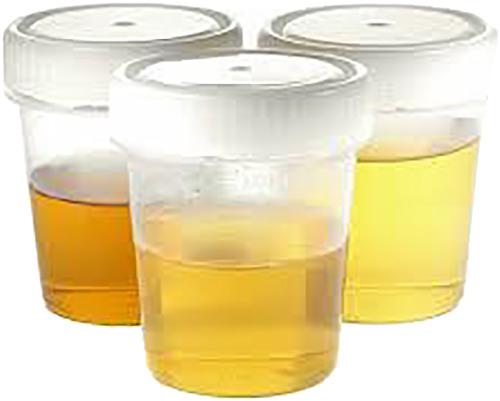当前位置:
X-MOL 学术
›
Drug Test. Anal.
›
论文详情
Our official English website, www.x-mol.net, welcomes your
feedback! (Note: you will need to create a separate account there.)
Phase I metabolites (organic acids) of gamma-hydroxybutyric acid-validated quantification using GC-MS and description of endogenous concentration ranges.
Drug Testing and Analysis ( IF 2.6 ) Pub Date : 2020-06-30 , DOI: 10.1002/dta.2820 Pouria Jarsiah 1, 2 , Joerg Roehrich 1 , Marek Wyczynski 2 , Cornelius Hess 1
Drug Testing and Analysis ( IF 2.6 ) Pub Date : 2020-06-30 , DOI: 10.1002/dta.2820 Pouria Jarsiah 1, 2 , Joerg Roehrich 1 , Marek Wyczynski 2 , Cornelius Hess 1
Affiliation

|
Gamma‐hydroxybutyric acid (GHB) is a sedative drug used in drug‐facilitated crimes. Its detection window is very short. GHB undergoes intensive phase I metabolism to organic acids (glycolic acid, succinic acid, dihydroxybutyric acids). These could be potential analytical targets to broaden the detection window. The aim of the present study was to enable the detection of endogenous levels of these metabolites in biological samples (blood and urine). A gas chromatographic–mass spectrometric method using liquid–liquid extraction and derivatization with N‐methyl‐N‐tri‐methylsilyltrifluoracetamide was developed for the quantification. Validation results were consistent with international guidelines, and the method was able to quantify endogenous levels of the substances in both urine and blood. Endogenous concentrations were shown to be <0.03–4.92 mg/L for glycolic acid, <0.03–1.28 mg/L for GHB, <0.28–18.1 mg/L for succinic acid, <0.12–1.38 mg/L for 2,4‐dihydroxybutyric acid, and <0.13–2.59 mg/L for 3,4‐dihydroxybutyric acid in serum samples of 101 volunteers. Urinary endogenous concentrations were shown to be 1.30–400 mg/L for glycolic acid, <0.03–1.94 mg/L for GHB, 1.17–2.73 mg/L for succinic acid, 0.72–26.2 mg/L for 2,4‐dihydroxybutyric acid, and 1.88–122 mg/L for 3,4‐dihydroxybutyric acid in urine samples of 132 volunteers. These endogenous concentrations represent a basis to which concentrations after the intake of GHB can be compared to in order to prove the intake of this substance.
中文翻译:

使用GC-MS验证了γ-羟基丁酸的I相代谢物(有机酸),并描述了内源性浓度范围。
γ-羟基丁酸(GHB)是用于毒品犯罪的镇静药物。它的检测窗口很短。GHB经历I期密集代谢为有机酸(乙醇酸,琥珀酸,二羟基丁酸)。这些可能是扩大检测范围的潜在分析目标。本研究的目的是能够检测生物样品(血液和尿液)中这些代谢物的内源性水平。气相色谱-质谱法,采用液-液萃取并用N-甲基-N衍生化开发了用于定量的三甲基甲硅烷基三氟乙酰胺。验证结果与国际准则一致,该方法能够定量尿液和血液中内源性物质的含量。乙醇酸的内源性浓度<0.03–4.92 mg / L,GHB <0.03–1.28 mg / L,琥珀酸<0.28–18.1 mg / L,2,4–3 <0.12-1.38 mg / L 101名志愿者的血清样本中的3,4-二羟基丁酸含量<0.13-2.59 mg / L。乙醇酸的尿内源性浓度为1.30–400 mg / L,GHB为<0.03–1.94 mg / L,琥珀酸为1.17–2.73 mg / L,2,4-二羟基丁酸为0.72–26.2 mg / L以及132名志愿者的尿液样本中3,4-二羟基丁酸的1.88–122 mg / L。
更新日期:2020-06-30
中文翻译:

使用GC-MS验证了γ-羟基丁酸的I相代谢物(有机酸),并描述了内源性浓度范围。
γ-羟基丁酸(GHB)是用于毒品犯罪的镇静药物。它的检测窗口很短。GHB经历I期密集代谢为有机酸(乙醇酸,琥珀酸,二羟基丁酸)。这些可能是扩大检测范围的潜在分析目标。本研究的目的是能够检测生物样品(血液和尿液)中这些代谢物的内源性水平。气相色谱-质谱法,采用液-液萃取并用N-甲基-N衍生化开发了用于定量的三甲基甲硅烷基三氟乙酰胺。验证结果与国际准则一致,该方法能够定量尿液和血液中内源性物质的含量。乙醇酸的内源性浓度<0.03–4.92 mg / L,GHB <0.03–1.28 mg / L,琥珀酸<0.28–18.1 mg / L,2,4–3 <0.12-1.38 mg / L 101名志愿者的血清样本中的3,4-二羟基丁酸含量<0.13-2.59 mg / L。乙醇酸的尿内源性浓度为1.30–400 mg / L,GHB为<0.03–1.94 mg / L,琥珀酸为1.17–2.73 mg / L,2,4-二羟基丁酸为0.72–26.2 mg / L以及132名志愿者的尿液样本中3,4-二羟基丁酸的1.88–122 mg / L。











































 京公网安备 11010802027423号
京公网安备 11010802027423号